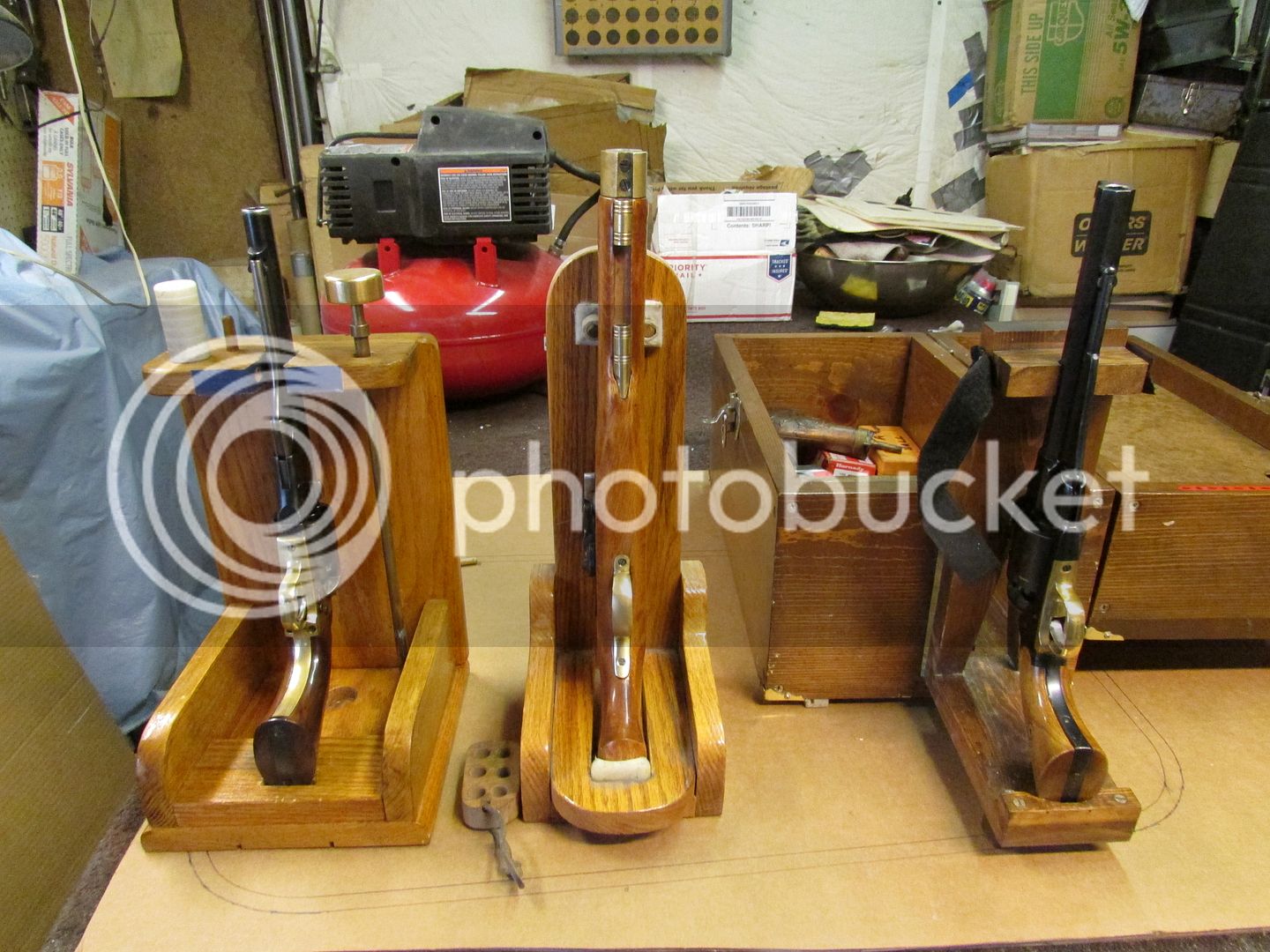Hello,
This is my first post on this forum.
I'm from Romania and one of my hobbies is black powder firearms.
Unfortunately in Romania there are few black powder firearms enthusiasts.
I hope this hobby will grow in Romania in the near future.
I have 3 black powder revolvers:
- Uberti Colt 1851 Navy .36 cal.
- Pietta Colt 1851 Navy .44 cal.
- Pietta Remington 1858 New Army .44 cal.
I'll try to make a short review for the Uberti Colt 1851 Navy .36 cal.
The gun was bought from Germany with the help of a romanian gunsmith.
The gun is very well made and is very similar with the original.
Good points:
- the barrel detaches from the frame, so you can clean de gun very well
- the barrel is rifled
- the firing mechanism is very smooth and safe
- very accurate at 10, 15, 20 and 25 meters
Bad points:
- the grip is very small, so you have a big hand you'll find a little difficult to have handle the gun
- the frame is opened, so the recoil can weaken the gun
- fired caps have often fallen between the drum and the frame, so the gun jammed
Here are some pictures of my Uberti Colt 1851 Navy .36 cal. and a short video of loading and firing the gun at a local roamnian range:



http://www.youtube.com/watch?v=iCf4mdK_xP8
Best regards,
Mihai.
This is my first post on this forum.
I'm from Romania and one of my hobbies is black powder firearms.
Unfortunately in Romania there are few black powder firearms enthusiasts.
I hope this hobby will grow in Romania in the near future.
I have 3 black powder revolvers:
- Uberti Colt 1851 Navy .36 cal.
- Pietta Colt 1851 Navy .44 cal.
- Pietta Remington 1858 New Army .44 cal.
I'll try to make a short review for the Uberti Colt 1851 Navy .36 cal.
The gun was bought from Germany with the help of a romanian gunsmith.
The gun is very well made and is very similar with the original.
Good points:
- the barrel detaches from the frame, so you can clean de gun very well
- the barrel is rifled
- the firing mechanism is very smooth and safe
- very accurate at 10, 15, 20 and 25 meters
Bad points:
- the grip is very small, so you have a big hand you'll find a little difficult to have handle the gun
- the frame is opened, so the recoil can weaken the gun
- fired caps have often fallen between the drum and the frame, so the gun jammed
Here are some pictures of my Uberti Colt 1851 Navy .36 cal. and a short video of loading and firing the gun at a local roamnian range:



http://www.youtube.com/watch?v=iCf4mdK_xP8
Best regards,
Mihai.
Last edited by a moderator:







